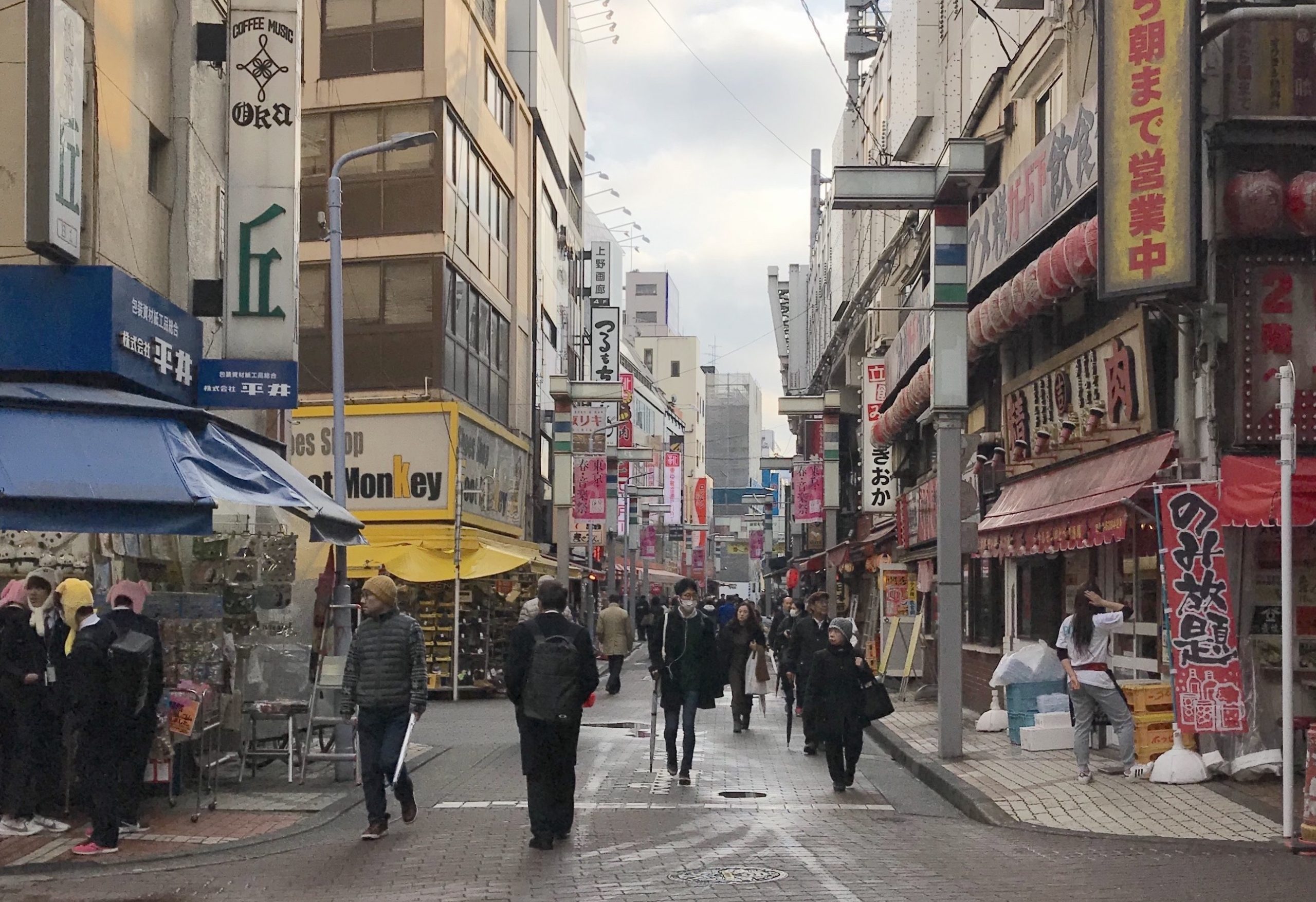和訳は英語の下にございます。/The Japanese translation is below the English text.
HOW DO YOU SAY “AND” AFTER NOUN?
Contents 1. In short: Use “to” after a noun 2. Special case: Use “de” when the nouns are in the predicate 3. Bonus: "De" doesn't have tense
In Japanese, there are two ways to say “and” after a noun: One is “to” and the other “de”.
Here are how to use them in the right place:
1. In short: Use “to” after a noun
To say “and” in Japanese, we usually say “to” after a noun. This “to” it means “and” here) is a particle and works like a hook on which you can put the next noun.

Example 1. Tomodachi to watashi wa bijutsukan e ikimashita. (My friends and I went to an art museum.)
Ex. 2. Watashi wa sarada to sushi o chuumon-shimashita. (I ordered a salad and sushi.)
Ex. 3. Doyoobi to nichiyoobi ni, nihongo o benkyoo-shimasu. (On Saturdays and Sundays, I study Japanese.)
As shown above, the connected nouns may take various positions or have various functions in a sentence. In Ex. 1, they are the subject of the sentence while in Ex. 2, they are the object of the verb. They are in an adverbial clause in Ex. 3.
You can also make a longer strand of nouns connected with “to”, but in any case, do not add “to” to the last noun on your list. Instead, follow the last noun with a particle, a verb, or anything that decides what role the nouns as a group should play in your sentence. For example,
Ex. 4. [After a vocabulary quiz or something] 1-ban to, 3-ban to, 5-ban to, 7-ban to, 8-ban o machigaemashita. (I was wrong on No. 1, No. 3, No. 5, No. 7 and No. 8.)
Here, the particle “o” shows that the five numbers are altogether the object of the verb “machigaemashita” (make a mistake on something).
2. Use “de” when the nouns are in the predicate
There is one case in which you need the particle “de” to mean “and” after a noun.
It is when the nouns are in the predicate.
Suppose we would like to say “We are Japanese and teachers.” In this case, we must say “de” after “nihon-jin” as follows:
Ex. 5. Watashi-tachi wa nihon-jin de kyooshi desu. (We are Japanese and teachers.)
Both “nihon-jin” and “kyooshi” are the predicate of the sentence. The predicates, the underlined part in Ex. 5, are the part of a sentence which explains the subject.
For more on the predicate, please refer to Two Uses of Adjectives, but basically, a simple sentence has a subject and a predicate. We can say Ex. 5 contains two predicates because we see it was originally two sentences as follows:
Ex. 6. Watashi-tachi wa nihon-jin desu. Soshite watashi-tachi wa kyooshi desu. (We are Japanese. And we are teachers.)
Compare Ex. 5 and Ex. 6. “De” in Ex. 5 replaces “[…nihon-jin] desu. Soshite…” in Ex. 6.
This “de” is a connecting form of the verb “desu”. In other words, “de” works like a hook equipped to the “-desu” sentence-ending to hang another sentence on.
Therefore, in full sentence, Ex. 6 should be like this:
Ex. 7. Watashi-tachi wa nihon-jin de, watashi-tachi wa kyooshi desu. (We are Japanese and we are teachers.)
From this, trim the redundant parts off, hence Ex. 5. This is why we need “de” for it.
So, if, in the future, you are saying a sentence with two or more words to explain one subject, stop and think if you do not need “de” in the connection.
3. Bonus: “De” doesn’t have tense
Use of “de” thus lets you make a longer sentence with one subject followed by several predicates.
When you do this, you can use “de” with any tense. Only at the last of the sentence do you have to express whether it’s past or present, etc., and the entire predicate will have the tense.
In other words, you can use “de” for “…desu. Soshite,” or “…deshita. Soshite…”. See the example:
Ex. 8. Tezuka Osamu wa nihonjin de, dansei de, isha de, manga-ka deshita. (Tezuka Osamu was a Japanese person, a male, a doctor, and a cartoonist.)
The last “deshita” shows that Mr. Tezuka is no longer active or alive.
So, keeping in mind you need to pay special attention to the last part of the sentence, proceed to read: How Do You Say “And” After Verb?
[End of the English post]
Other posts on “How Do You Say ‘And’ In Japanese?”
=> Summary: How Do You Say “And” In Japanese?
=> How Do You Say “And” After Verb?
=> How Do You Say “And” After Na-Adjective?
=> How Do You Say “And” After I-Adjective?
=> How Do You Say “And” As A Conjunction?
名詞の後でAND…を何という?
目次 1. 手短かに:「と」を使う 2. 特別の場合: 述部の中の名詞につなぐ場合は「で」を使う 3. ボーナス情報:「で」には時制がない
名詞の後に来る、「and」に当たる言葉は、日本語では「と」と「で」の二つがあります。
以下、「と」と「で」を使う場合の違いについてお話します。
1.手短かに:「と」を使う
「and」に当たる言葉で名詞の後で使うのは、普通は「と」です。この「と」は助詞で、これを言うと、名詞の後ろに次の言葉を引っかけるカギ(フック)ができたことになるのです。
例1 友達と私は美術館へ行きました。
例2 私はサラダと寿司を注文しました。
例3 土曜日と日曜日に、日本語を勉強します。
このように、「と」でつながれた名詞群は文の中でいろいろな役割を果たします。例1では文の主語、例2では動詞の目的語ですが、例3では副詞句になっています。
もっと多くの名詞を「と」でつなぐこともできますが、どの場合も最後の名詞の後には「と」は付けません。ここには助詞や動詞などが来ますが、その助詞や動詞は、下の例のように「と」でつながれた言葉すべてにかかり、文の中でどんな働きをするかを決定します。
例4 [単語テストのあとで] 1番と、2番と、3番と、5番と、7番と、8番をまちがえました。
ここでは、助詞「を」は五つの番号すべてが「まちがえました」の目的語になることを示します。
2.特別の場合:述部の中の名詞につなぐ場合は「で」を使う
さて、「で」を「and」の意味で使う特別な場合があります。
それは、つながれた言葉が術部である場合です。
例えば、下の文で「日本人と教師です」と言い換えることはできません。
例5 私たちは、日本人で教師です。
それは、「日本人」も「教師」も文の述部であるためです。述部とは、文の中で、主語について説明する部分のことで、ここでは下線部が述部です。
述部については形容詞の二つの働きでも述べましたが、基本的に、単文は、一つの主語と一つの述部で成り立っています。例5に述部が二つあるというのは、もとは下記のように二つの文だったことがわかるからです。
例6 私たちは日本人です。そして、私たちは教師です。
例5と例6を比較してみてください。例5の「で」は、例6の下線部「です。そして」に置き換わっていますね。
この「で」は、動詞「です」のつなぎの形です。「で」は前の文の最後部に装着されたカギ(フック)で、そこに次の文が引っ掛けられているのです。
従って、「で」を厳密な仕方で使えば、このような文ができます。
例7 私たちは日本人で、私たちは教師です。
ここから重複した部分を取り去ると、例5の文になります。だからここには「で」が必要なのです。
ですから、もし二つ以上の言葉で一つの主語を説明しようと思ったら、ちょっと考えてみてください。ここには「で」が必要なのではないかと。
3. ボーナス情報:「で」には時制がない
さて、このように「で」を使うと、一つの主語についていくつも述語を持った長い文を作ることができます。
この時、「で」はどんな時制でも使えます。つまり、文の最後の部分で過去か現在かなどを言えば、述部全体がその時制になります。
言葉を換えて言えば、「で」は「です。そして」にも「でした。そして」にもなります。例を見てください。
例8 手塚治虫は日本人で、男性で、医者で、漫画家でした。
手塚氏がすでに活動を中止しているか、存命ではないことを示すのは最後の「でした」だけです。
ですから、くれぐれも文の最後には気を付けつつ、次は、動詞の後でAND…をどう言うか を読んでみましょう。
[和文部終わり]
「日本語でAND…は何という?」の関連記事
=> まとめ記事:日本語でAND…は何という?
=> 動詞の後でAND…をどう言うか
=> ナ形容詞の後でAND…をどう言うか
=> イ形容詞の後でAND…をどう言うか
=> 接続詞としてのANDは何と言う?




